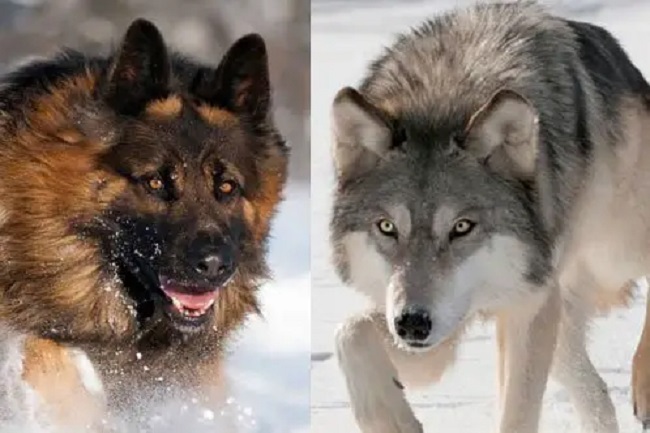The world of canines is diverse and expansive, ranging from the smallest Chihuahua to the majestic wolf. Many people, intrigued by the stark resemblance between their pet dogs and wild wolves, often wonder about the size difference between the two.
This article delves into the fascinating comparison of wolf size versus dog size, the inherent differences between the two species, and provides an insightful look into the world of wolves.

How Big Are Wolves Compared to Dogs?
When compared to most domestic dogs, wolves are significantly larger. An adult gray wolf, the most common wolf species, can reach lengths of 40 to 65 inches from their nose to the tip of their tail, and stand about 27 to 33 inches tall at the shoulder.
Read Also:
They can weigh anywhere between 70 to 130 pounds, with males typically larger than females. In contrast, dog sizes vary dramatically across different breeds. The smallest dog breeds, like the Chihuahua, can weigh under 6 pounds and stand about 5 to 8 inches tall.
On the larger end, breeds like the Great Dane or the English Mastiff can stand over 30 inches tall and weigh up to 200 pounds. However, these large dogs are exceptions. Most domestic dogs are significantly smaller than wolves.
Are Wolves Bigger Than Dogs?
Yes, on average, wolves are bigger than dogs. While there are certain dog breeds that are comparable to wolves in size, such as the aforementioned Great Dane or English Mastiff, the majority of dog breeds are smaller.
It’s also important to note that while some dogs may equal or surpass the wolf’s height or weight, they do not match the wolf in terms of overall body structure and strength.
Wolves have evolved in the wild and possess physical attributes necessary for survival, including powerful jaws, large teeth, and robust bodies.
A Little About Wolves
Wolves are the largest members of the Canidae family, which also includes dogs, foxes, and other similar animals. They are known for their loyalty to the pack, their complex communication methods, and their hunting prowess.
There are different species of wolves, including the gray wolf, red wolf, and Ethiopian wolf, each differing in size and habitat. Gray wolves are the most common and are known for their distinct howl used to communicate with the pack.
What Are the Main Differences Between Wolves and Dogs?
Though dogs and wolves share a common ancestor and a significant amount of genetic material, thousands of years of domestication and selective breeding have brought about considerable differences between the two. These differences include:
Size & Physical Attributes: As mentioned earlier, wolves are generally larger and stronger than dogs, with physical characteristics adapted for survival in the wild.
Behavior: Wolves are wild animals, and their behavior is guided by survival instincts. They are territorial and follow a hierarchical pack structure. Dogs, on the other hand, have been bred for companionship and have behaviors more suited to cohabitation with humans.
Communication: Wolves have a complex system of communication involving howls, body language, and scent marking. Dogs, while they can understand and use some of these communication methods, primarily rely on visual cues and vocalizations that are more easily understood by humans.
Life Cycle: Wolves have a set breeding season and can produce one litter per year. Dogs, in contrast, do not have a specific breeding season and can produce multiple litters in a year.
Read Also:
Conclusion
Understanding the size difference between wolves and dogs is not just about numerical comparisons. It’s about appreciating the nuances of the canine world and the incredible journey of domestication that separates our beloved pets from their wild counterparts.
Despite their differences, wolves and dogs share a common ancestry that manifests in remarkable ways. By understanding more about wolves, we deepen our understanding and appreciation of our own pet dogs.